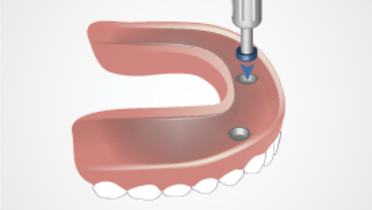-
0
Patient Assessment
- 0.1 Patient demand
- 0.2 Overarching considerations
- 0.3 Local history
- 0.4 Anatomical location
- 0.5 General patient history
-
0.6
Risk assessment & special high risk categories
- 5.1 Risk assessment & special high risk categories
- 5.2 age
- 5.3 Compliance
- 5.4 Smoking
- 5.5 Drug abuse
- 5.6 Recreational drugs and alcohol abuse
- 5.7 Parafunctions
- 5.8 Diabetes
- 5.9 Osteoporosis
- 5.10 Coagulation disorders and anticoagulant therapy
- 5.11 Steroids
- 5.12 Bisphosphonates
- 5.13 BRONJ / ARONJ
- 5.14 Radiotherapy
- 5.15 Risk factors
-
1
Diagnostics
-
1.1
Clinical Assessment
- 0.1 Lip line
- 0.2 Mouth opening
- 0.3 Vertical dimension
- 0.4 Maxillo-mandibular relationship
- 0.5 TMD
- 0.6 Existing prosthesis
- 0.7 Muco-gingival junction
- 0.8 Hyposalivation and Xerostomia
- 1.2 Clinical findings
-
1.3
Clinical diagnostic assessments
- 2.1 Microbiology
- 2.2 Salivary output
-
1.4
Diagnostic imaging
- 3.1 Imaging overview
- 3.2 Intraoral radiographs
- 3.3 Panoramic
- 3.4 CBCT
- 3.5 CT
- 1.5 Diagnostic prosthodontic guides
-
1.1
Clinical Assessment
-
2
Treatment Options
- 2.1 Mucosally-supported
-
2.2
Implant-retained/supported, general
- 1.1 Prosthodontic options overview
- 1.2 Number of implants maxilla and mandible
- 1.3 Time to function
- 1.4 Submerged or non-submerged
- 1.5 Soft tissue management
- 1.6 Hard tissue management, mandible
- 1.7 Hard tissue management, maxilla
- 1.8 Need for grafting
- 1.9 Healed vs fresh extraction socket
- 1.10 Digital treatment planning protocols
- 2.3 Implant prosthetics - removable
-
2.4
Implant prosthetics - fixed
- 2.5 Comprehensive treatment concepts
-
3
Treatment Procedures
-
3.1
Surgical
-
3.2
Removable prosthetics
-
3.3
Fixed prosthetics
-
3.1
Surgical
- 4 Aftercare
インプラントオーバーデンチャー装着後
Key points
- オーバーデンチャーの床の適合、辺縁、咬合、機能、審美性および快適さを評価します。
- 軟組織および硬組織の治癒を評価します。
- 必要に応じて弾性裏装材を交換します。
- コンポーネントの機能をチェックし、患者がオーバーデンチャーを適切に扱っているかどうかを確認します。
装着後の来院 – 注意事項
装着後の来院では、 装着時に注意深く評価した項目を再び検討し、必要な調整を行います。オーバーデンチャーの床の適合、辺縁、咬合、審美性、機能、快適さおよび総合的な患者の満足度 をチェックする必要があります。また、軟組織の治癒を評価し、腫脹が残っていないか確認します。弾性裏装材を設置した場合は、軟組織の治癒や収縮により義歯床の適合が低下し、裏装材の交換が必要になります。ほとんどの弾性裏装材は、機械的特性上、2~4週間毎の交換を必要とします。長期使用において吸収の進行と形態の変化により義歯床の適合が低下した場合は、最終裏装材によるリライニングが必要になります。また、維持力が低下した場合は、その維持機構に応じてアタッチメントの修正やメイル、フィメイルの交換が必要になります。
患者の反応
装着後の来院は、審美的結果に対する患者の反応を評価すると同時に、新しい補綴物に対する患者の適応および補綴物に対する患者の総合的満足度を評価するのにきわめて重要です。最初に可撤式補綴物を選択しても、実際に毎日使用してみると、固定式補綴物への切り替えを希望する患者もおり、このような場合は、インプラントを追加したり、補綴物のデザインを変更したりする必要が出てきます。患者が気に入ったかどうかに関係なく、このオーバーデンチャーは患者が満足する可能性を高めるために今後行うべきインプラント治療の指針を提供するという貴重な役目を果たしたことになります。
臨床トピック
Related articles
Questions
ログインまたはご登録してコメントを投稿してください。
質問する
ログインまたは、無料でご登録して続行してください
You have reached the limit of content accessible without log in or this content requires log in. Log in or sign up now to get unlimited access to all FOR online resources.
FORウェブサイトにご登録していただきますと、すべてのオンライン・リソースに無制限にアクセスできます。FORウェブサイトへのご登録は無料となっております。



